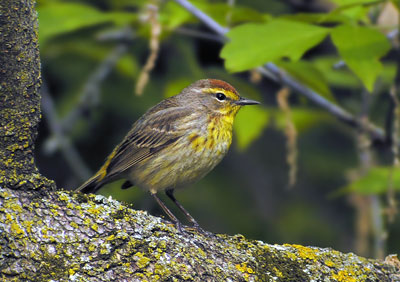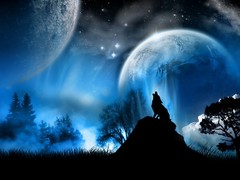
Birds have flourished on Earth for over 80 million years. Have you ever wondered what it would be like to travel back in time and go birding 100,000 years ago, 10 million years ago, etc.? How far back in time would you have to go to see the common ancestor of the Cerulean Warbler and Northern Parula? Or even further back in time, wouldn't it be cool to view an Archaeopteryx through your binocular? Perhaps the closest thing you can do to gain a sense of what this experience might be like would be to go birding in another country. But in deep time, there would be no field guide to help. Songs and feathers might be present in familiar themes, but there would also be fantastic unfamiliarity to your eyes and ears.
You would likely observe many bird species that represent common ancestors of those with us today. However, I think it erroneous to call them transitionals in any sense; they would be full species in their own right, each an evolutionary "experiment" every bit as much as today's bird species are. Though their DNA confirms their designation at a particular genus level (genotype), among wood warblers there is substantial variety of outward appearances and characteristics in plumage, song, and behavior (phenotype). Just consider the variety in phenotype exhibited by the wood warblers in the genus dendroica alone.
Consider Black-throated Green, Hermit, Townsend's, and Golden-cheeked Warblers. It's known that these four birds speciated more recently from a common ancestor versus most other dendoica warblers. Look how similar they are. When a population is on the verge of speciation, it doesn't occur overnight like a pair of American Redstarts hatching a nest of Hooded Warbler chicks, but does so on a population level with only subtle changes over time. In geological time, even "rapid" evolution may be thousands of years.
Perhaps the two Yellow-rumped Warblers may be a good example to consider. The Audubon's Warbler and Myrtle Warbler are presently regarded as one species (this wasn't always the case, however), hypothesized to have diverged as result of isolation during Pleistocene glaciation. There are minor differences between the two warblers in phenotype – certain plumage features, for one. Over time, if the two populations cease to overlap or lack opportunities to hybridize, each (population) will likely be subjected to different habitat and environmental conditions. Independent mutations occurring in each population will probably further the gap in both phenotype and genotype. Ultimately, if they become species that no longer interbreed, they will still bear a close outward appearance for a substantial period of time.
As much as I truly enjoy studying and watching our living birds, sometimes while birding my mind will drift and I'll ponder those birds that must have once existed but are now gone. I'm not referring to those birds we know are extinct during our time because they're a part of our recent history, but inferred or hypothetical ghosts we'll never see because their ancestors weren't preserved in the fossil record by feather or bone. This is obviously more speculation than science, but the beauty of this thought experiment is derived by one's own imagination – the common ancestors existed, but what did they look like? There literally must have been thousands of warbler species that once existed that are no longer with us. In a way, this idea helps me appreciate the ones that are here even more.
Palm Warbler image © 2009 Mike McDowell

















